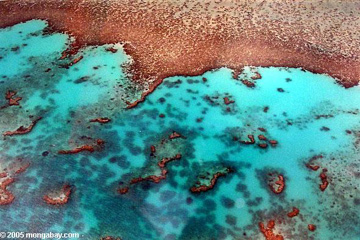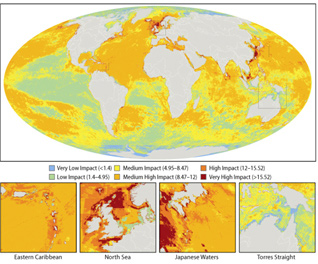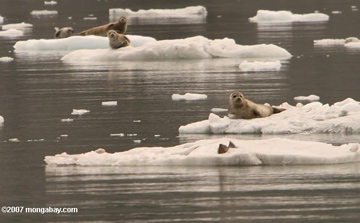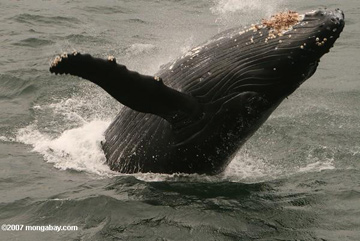Only 4% of the ocean is pristine according to first oceanic map of human-impact
Only 4% of the ocean is pristine according to first oceanic map of human-impact
Jeremy Hance, mongabay.com
February 14, 2008
|
|
There is a much used adage regarding the ocean that goes something like this: we know more about our solar system than our ocean. Whether or not one believes this to be true (less than 5% of the ocean has been explored), a group of over twenty researchers, by agglomerating the available information on the oceans, have created a large-scale image of the ocean’s health.
Compiling massive amounts of data from professional literature and research on marine ecosystems, the researchers created the first map displaying the extent of human impact on marine ecosystems.
“A series of papers have highlighted the role humans are having on the degradation of the oceans through specific activities. It’s timely to put it all together—to show how all the different effects sum up,” explained Dr. Fiorenza Micheli, associate professor of biology at Stanford and lead author of the study.
Such maps have been made for terrestrial landscapes using satellite imagery, but to do so for the ocean required studying particular human activities and their impacts on varying environments. It also required a greater reliance on modeling and predictions.
The researchers selected seventeen ways in which humans’ impact marine ecosystems, including commercial fishing, global warming, development on the coasts, pollution from shipping, and runoff from fertilizer and other chemicals. Micheli commented that “for some human activities, we have global data, like commercial fisheries catches. For others, we developed models to estimate global impacts.” They measured these impacts against twenty marine ecosystems, from coral reefs to open ocean, taking into account the particular vulnerabilities of each ecosystem. The ocean was broken down into square kilometers—361 million of them—each of these square kilometers were measured according to its ecosystem and the human impact on that particular kilometer. A number was then assigned depending on the degree of impact.
 The Great Barrier Reef 
|
The research yielded some disturbing results. Forty-one percent of the ocean suffers from high impact of human activities, while only four percent can be considered âpristine’. One of the most affected ecosystems is coral reefs, half of which are greatly threatened. Other highly-degraded marine environments include mangrove forests, seagrass beds, seamounts, continental shelves, and rocky reefs. Open ocean and deep ocean, perhaps not surprisingly, did far better, although they are still affected by human activity.
Particular regions, as well, stand out. Worst among them are the Caribbean, the North Sea, the Mediterranean, Japanese waters, South-east China seas, the Red Sea, the Persian Gulf, the Bering Sea, the East Coast of North America, and the western Pacific. The fact that most of these areas are adjacent to large human populations corresponds to another recent study which directly linked coral reef deterioration with proximity to human populations. The Arctic and Antarctic are the least impacted, however they are also the seas which are first and most affected by increasing global warming. Other regions of low impact include northern Australia, western-central Pacific, and spots along the coasts of South America and Africa.
Dr. Micheli believes that this map and its successors are great tool for conservationists and governments. She said that it should “guide ocean zoning and management of coastal waters.” The researchers of the study advocate increasing zoning and reserves in the oceans to protect the ecosystems. “By seeing where different activities occur and whether they occur in sensitive ecosystems, we can design management strategies aimed at shifting activities away from the most sensitive areas,” Micheli said. Reserves, in which all human activity is stopped for a period of time, have been successful in repairing damaged ecosystems. Micheli points to the fact that 60% of recorded species in reserves have benefited from the status. Such reserves, she says, have “an effect, not on just individual species but also on the structure of the whole food web.”
Dr. Micheli points out that “these estimates of human activity are probably optimistic”. This is due to the fact that the research measured only seventeen human factors on the marine ecosystems. With further research an even clearer picture of humanity’s widespread impact on the oceans will be available, and we may finally be able to put that old adage about solar systems and oceans to rest.
B.S. Halpern et al (2008). A Global Map of Human Impact on Marine Ecosystems. Science 14 Feb 2008


